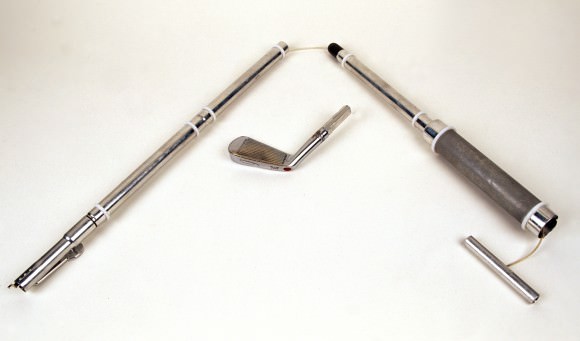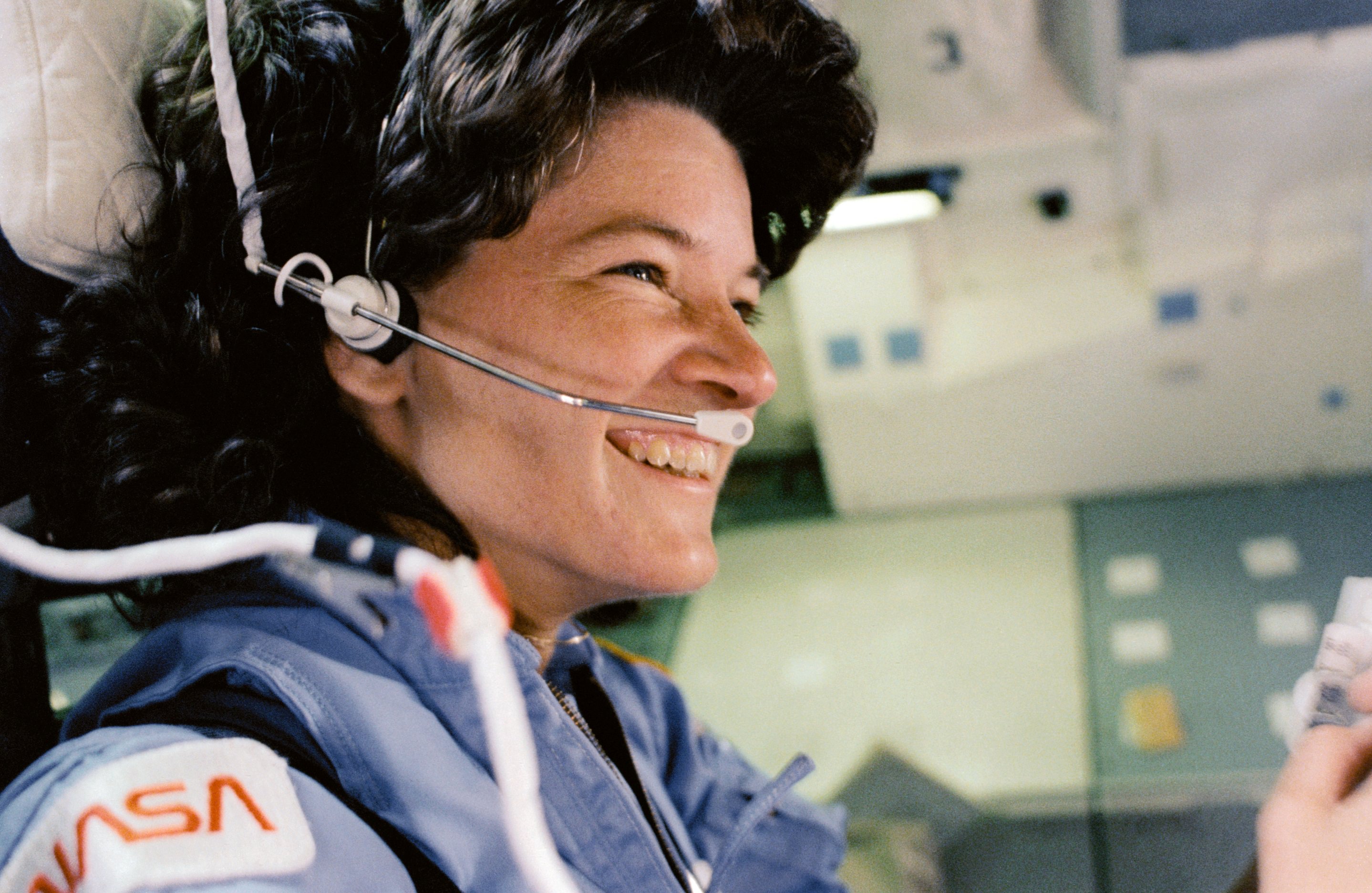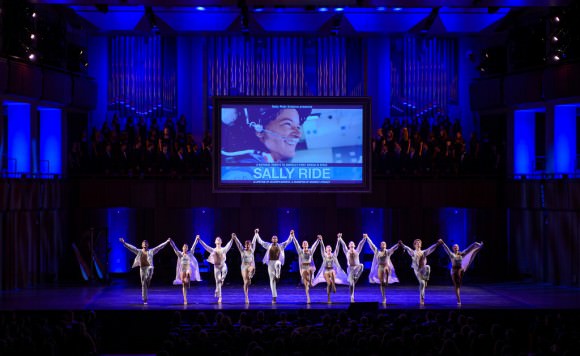During that heady time when NASA was sending people to the moon, Apollo astronaut Al Shepard — so the story goes — was showing comedian Bob Hope around a NASA center. Hope went into a simulator for the lighter lunar gravity and swung a golf club around (a habit of his) as he bounced around.
“That was the inspiration, I guess,” said Michael Trostel, the curator and historian at the United States Golf Association Museum in Far Hills, New Jersey. In other words, the inspiration for Al Shepard to bring a golf club to the moon and hit a couple of balls. The golf club, in fact, is at the USGA Museum today.
Of course, it wasn’t so easy just to bring a six-iron on board — there were science experiments and other payloads for the Apollo 14 crew. According to the Smithsonian National Air and Space Museum, the golf club was actually “a contingency sample extension handle with a No. 6 iron golf club head attached.”
Unusually, as space artifacts tend to head over to the Smithsonian after missions, this particular one ended up at the USGA Museum itself. In 1972, when singer Bing Crosby (also a friend of Hope’s and Shepard’s) was a member of the board, he wrote to Shepard on behalf of the museum and asked for the club. Shepard agreed and handed it over during a special ceremony in 1974.
“The reason that it’s not in this museum was that it was personal property of Alan Shepherd. In other words, he took it to space, he brought it back, it was still his personal property he donated it and it was his. That’s the reason,” said Claire Brown, the Smithsonian National Air and Space Museum’s communications director.
“Things were a little different back then. You could take a certain amount of personal property. There are different rules now, but at the time that he did it, he was able to bring his own personal club.”




